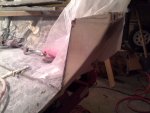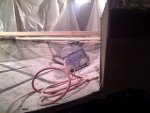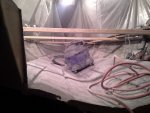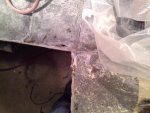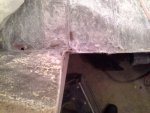maryhannaj
Chief Petty Officer
- Joined
- Sep 22, 2013
- Messages
- 422
Re: 1982 Glastron Hpv165 bass boat restoration.
Thanks jbcurt00. I appreciste the comp. It is a PITA. I don't think it would be so bad if there was a comfortable way to position myself while grinding it. I am fortunate that it's the colder season for the purpose of being siuted up though. That's a good thing I suppose.
Yes, he did post at list. Thanks again WOG. My questions about the materials were more about the specifics I guess. I didn't know that there were different variations of the materials.
I'm going to use the vinyle ester for the transom and the 435 for the rest. I just can't see how the suggested amount of 1708 is going to be enough when I intend to glass in the entire hull. It was just listed as a rough starting point though.
Thanks jbcurt00. I appreciste the comp. It is a PITA. I don't think it would be so bad if there was a comfortable way to position myself while grinding it. I am fortunate that it's the colder season for the purpose of being siuted up though. That's a good thing I suppose.
Yes, he did post at list. Thanks again WOG. My questions about the materials were more about the specifics I guess. I didn't know that there were different variations of the materials.
I'm going to use the vinyle ester for the transom and the 435 for the rest. I just can't see how the suggested amount of 1708 is going to be enough when I intend to glass in the entire hull. It was just listed as a rough starting point though.




















_GP-824CF.jpg)

